The spire at Verkhoturye: Gateway from the Urals to Siberia
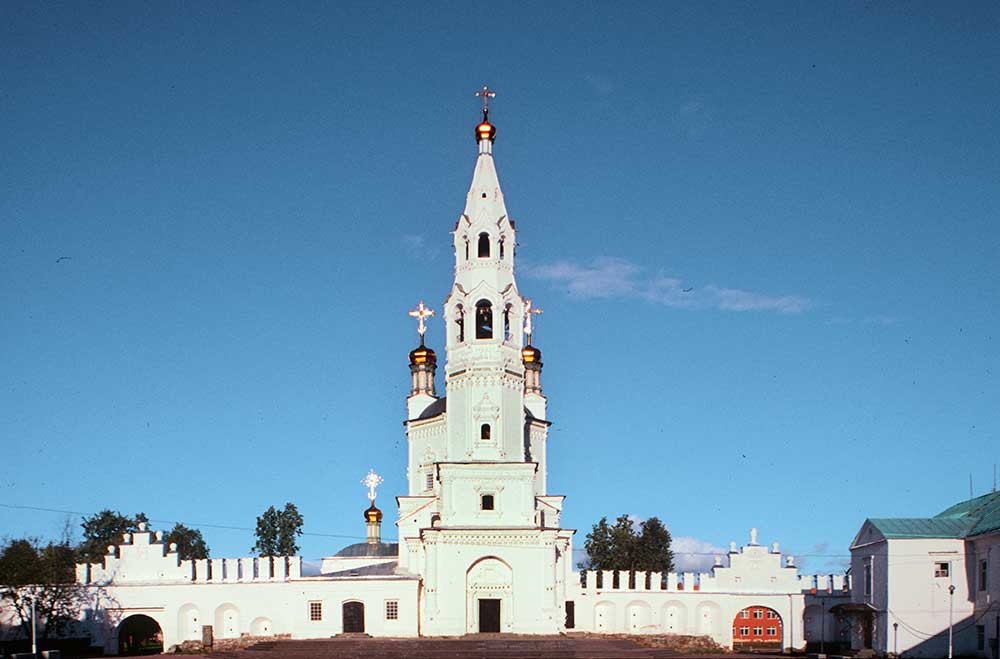
Verkhoturye. Trinity Cathedral & bell tower, kremlin wall. West view. August 26, 1999
William BrumfieldAt the beginning of the 20th century, the Russian chemist and photographer Sergei Prokudin-Gorsky developed a complex process for vivid, detailed color photography. His vision of photography as a form of education and enlightenment was demonstrated with special clarity through his photographs of architectural monuments at historic sites throughout the Russian heartland.
The year 1909 was particularly significant for his work. In May, Emperor Nicholas II invited the photographer to the imperial residence at Tsarskoe Selo to show his images of Russia through an elaborate projector. Following this presentation, Prokudin-Gorsky gained the support of the imperial court to continue his travels. The

Verkhoturye. Trinity Cathedral & bell tower, kremlin wall. West view. Late summer 1909
Sergei Prokudin-GorskyAmong his expeditions in summer 1909, Prokudin-Gorsky embarked on the first of his journeys to the Ural Mountains. Traveling with the logistical support of the Ministry of Transportation, he took views ranging from wild nature to large factories. My own visit to this area occurred exactly nine decades later, in late summer 1999.
Gateway to Siberia
One of the most picturesque sites Prokudin-Gorsky visited in this region was the small town of Verkhoturye (pronounced “
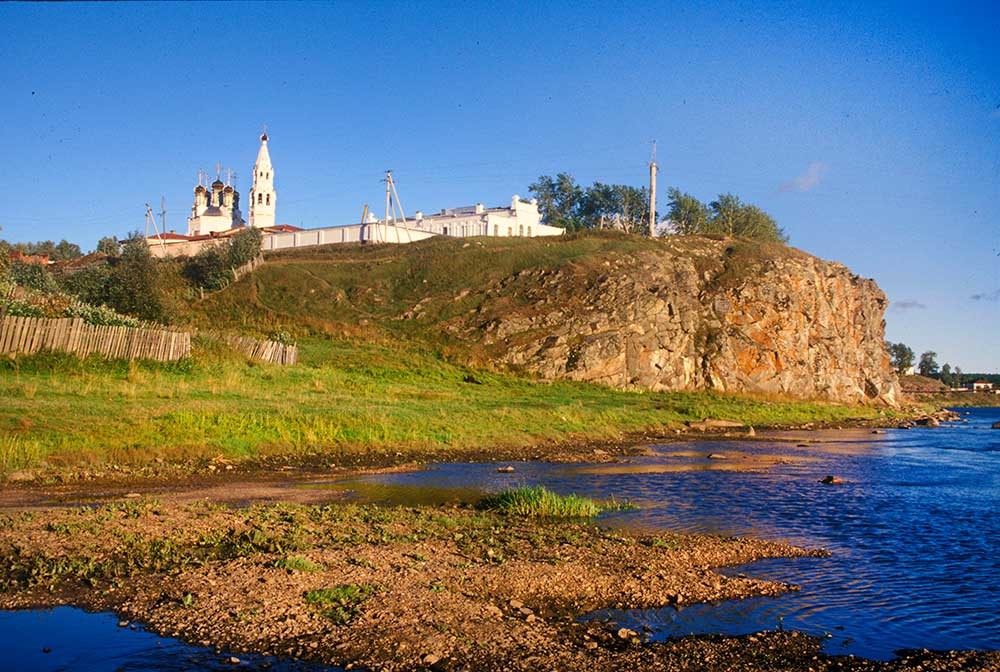
Verkhoturye kremlin on Trinity Rock above Tura River. Left: Trinity Cathedral & bell tower, northwest view. August 26, 1999
William BrumfieldWith its fortress spectacularly situated on a sheer stone cliff above the rocky Tura, Verkhoturye (its name means “upper Tura”) played a critical role in extending Russian authority to the east during the 17th century. With a current population slightly under 9,000, its modest size belies the fact that for much of the 17th and 18th centuries Verkhoturye was the primary point of transit from European Russia across the Ural Mountains into the vast Siberian domains.
Around 620 miles in length, the Tura River is not large by Russian standards, yet it is a crucial link from the eastern watershed of the Urals to the great Ob-Irtysh river basin in Siberia. With the founding of Tobolsk in 1585, Russia had a strategic anchor on the Irtysh River in western Siberia.
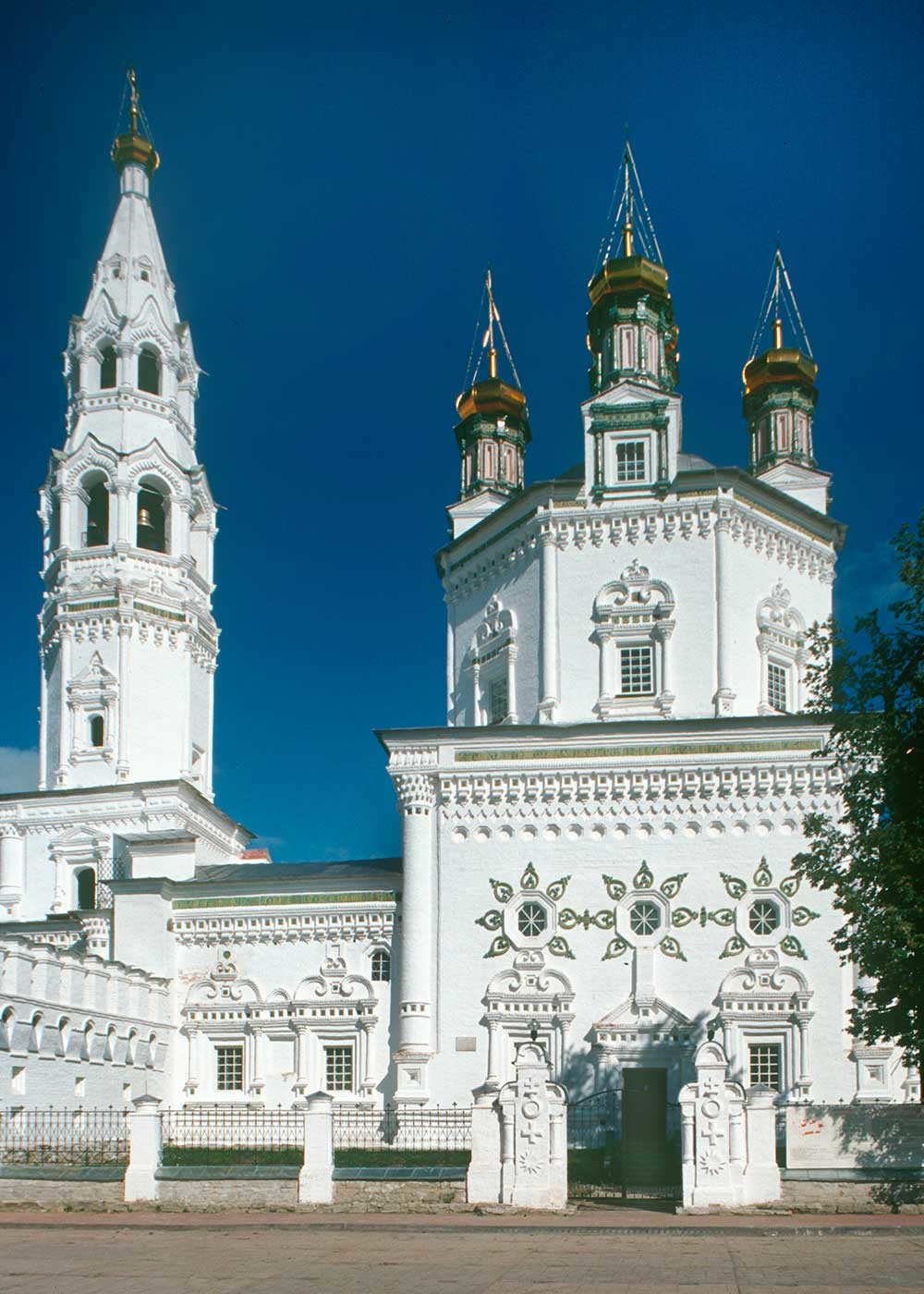
Trinity Cathedral & bell tower. South view. August 27, 1999
William BrumfieldIn 1595, Tsar Fyodor, son of Ivan the Terrible, announced a search for new paths to Siberia. The challenge was to find a more direct way across the Urals to the Tobol River basin. The Tura, which flows into the Tobol River south of Tobolsk, proved the logical choice. Shortly thereafter Artemy Babinov, a free peasant from Solikamsk, blazed a trail across the Urals from Solikamsk to the Tura River.
Within a short period of two years, the almost 160-mile path was improved to a state
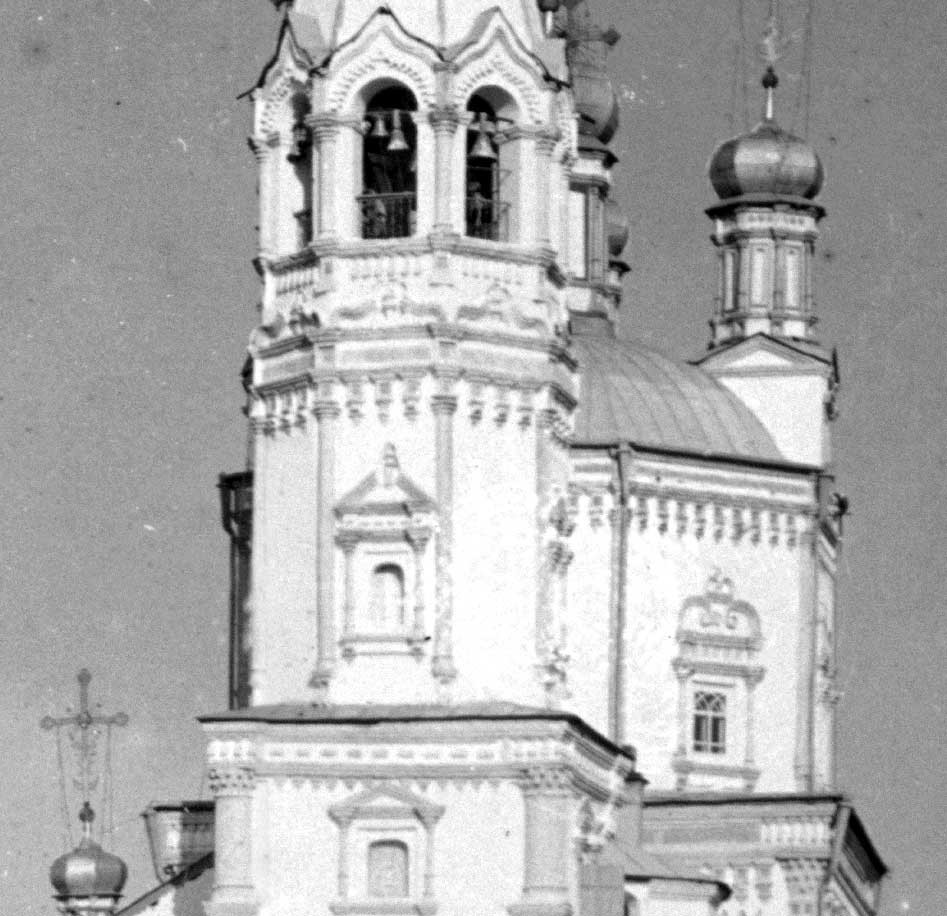
Trinity Cathedral & bell tower. West view, detail. Late summer 1909
Sergei Prokudin-GorskyEconomic hub
This tight control on
Throughout the 17th century, Verkhoturye bustled with activity as salt, manufactured goods
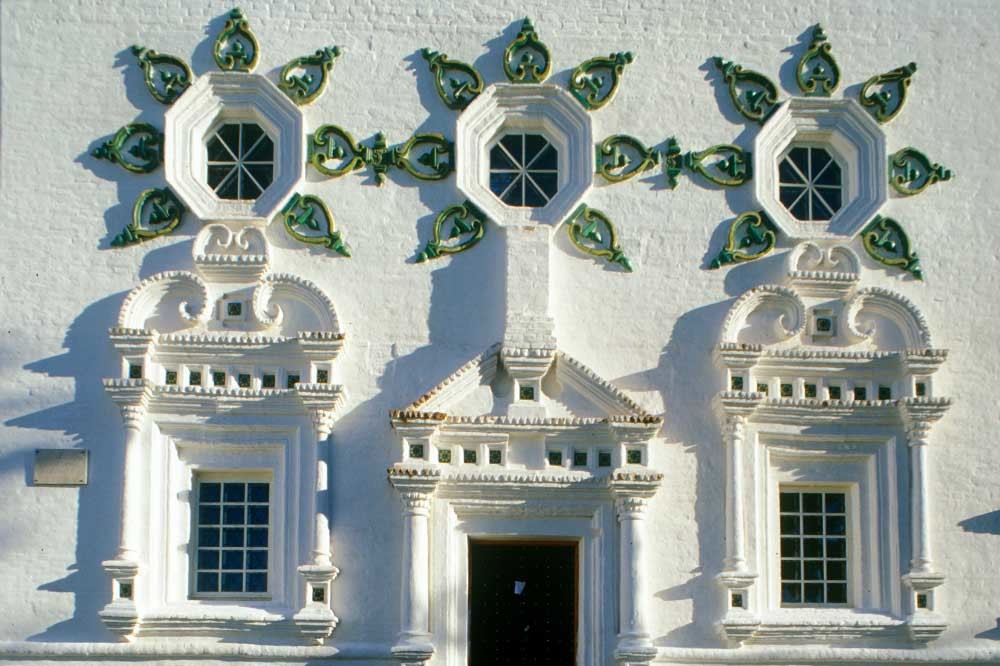
Trinity Cathedral. South facade with ceramic decoration. August 27, 1999
William BrumfieldIn addition to the settlement of townspeople adjacent to the fort, other quarters were established in the early 17th century to keep goods moving under the most difficult of conditions. Settlements on both sides of the river are linked by a suspension footbridge, seen in one of my photographs.
For the first century of its
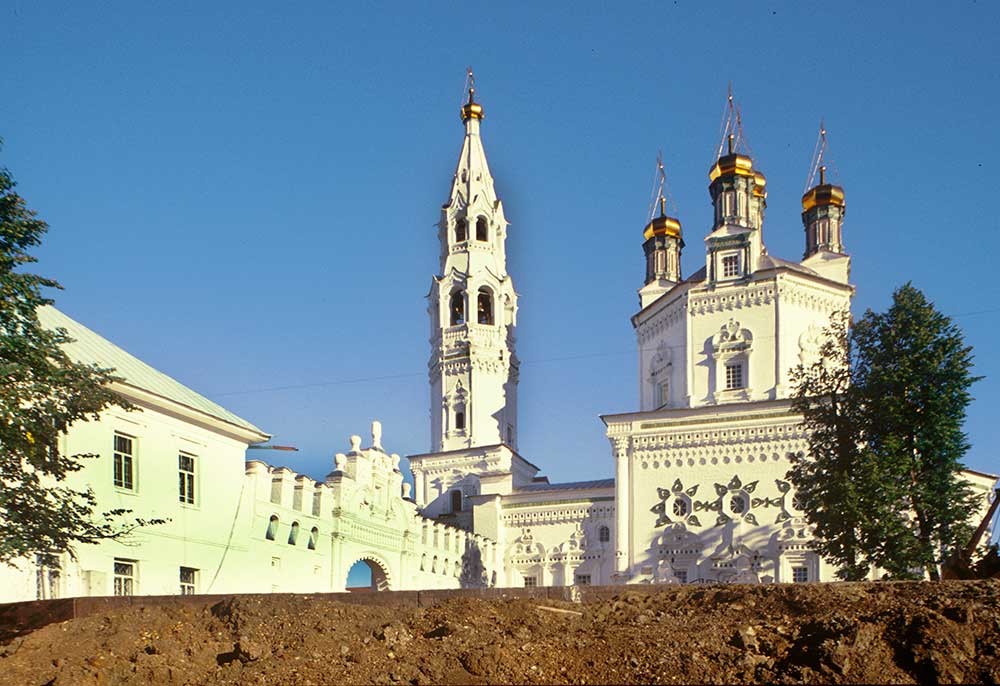
Trinity Cathedral & bell tower. South view with kremlin wall. August 27, 1999
William BrumfieldThe centerpiece was the Trinity Cathedral, whose reconstruction in brick was authorized by Peter the Great in 1703, the year of the founding of St. Petersburg. The main altar was consecrated in 1709, although work on the complex structure continued until 1712. Its distinctive decoration owes much to the master builders of Solikamsk who were sent by Peter to erect an imposing structure to the glory of Russia.
The Trinity Cathedral emphasizes its spectacular location with a vertical emphasis created by a high octagonal upper tier. The square basic structure is amplified by attached chapels and a large apse on the east that contains the primary altar. The bell tower soars in a spire at the west end over the main entrance.
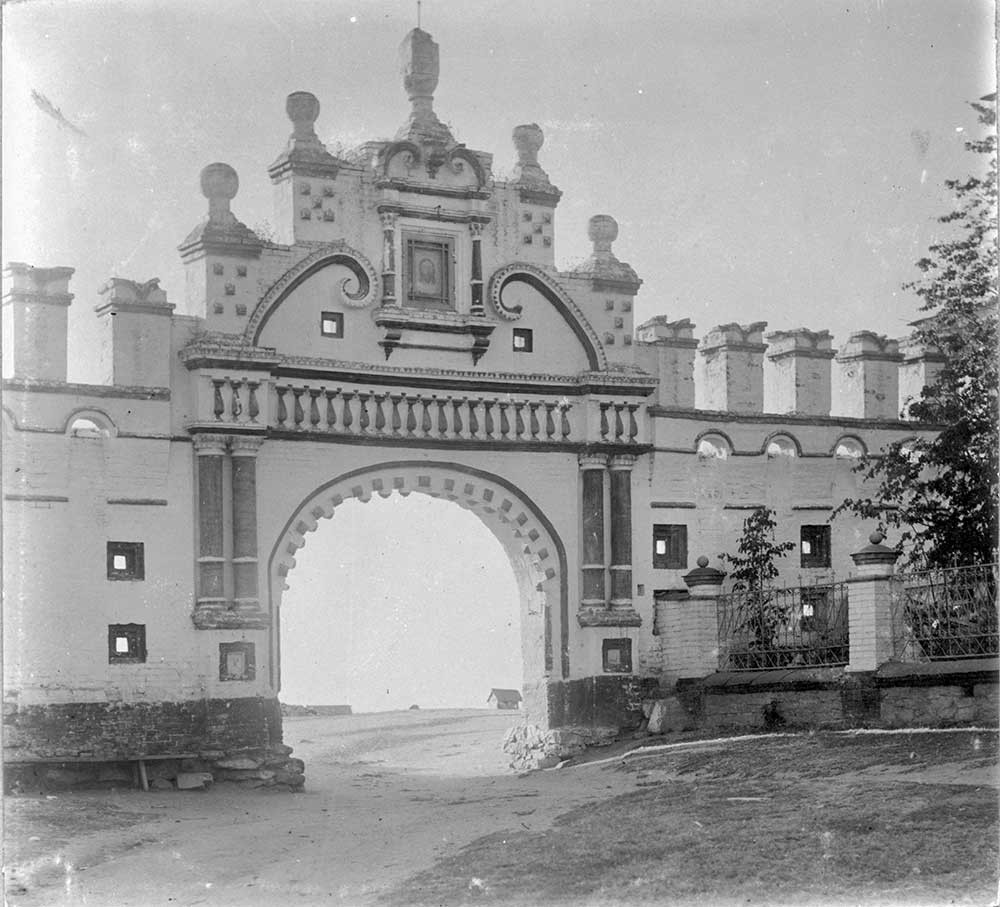
Verkhoturye. North kremlin wall, view from east side. Late summer 1909
Sergei Prokudin-GorskyThe complex structure is crowned with gilded cupolas placed at the compass points in the Ukrainian manner. Its various levels are accented with a mixture of elements characteristic of Solikamsk church architecture and derived from various sources in a style that has been called “Siberian Baroque.”
The images in Prokudin-Gorsky’s contact albums reveal his fascination with the central Verkhoturye ensemble. One view from the west encompasses not only the cathedral and bell
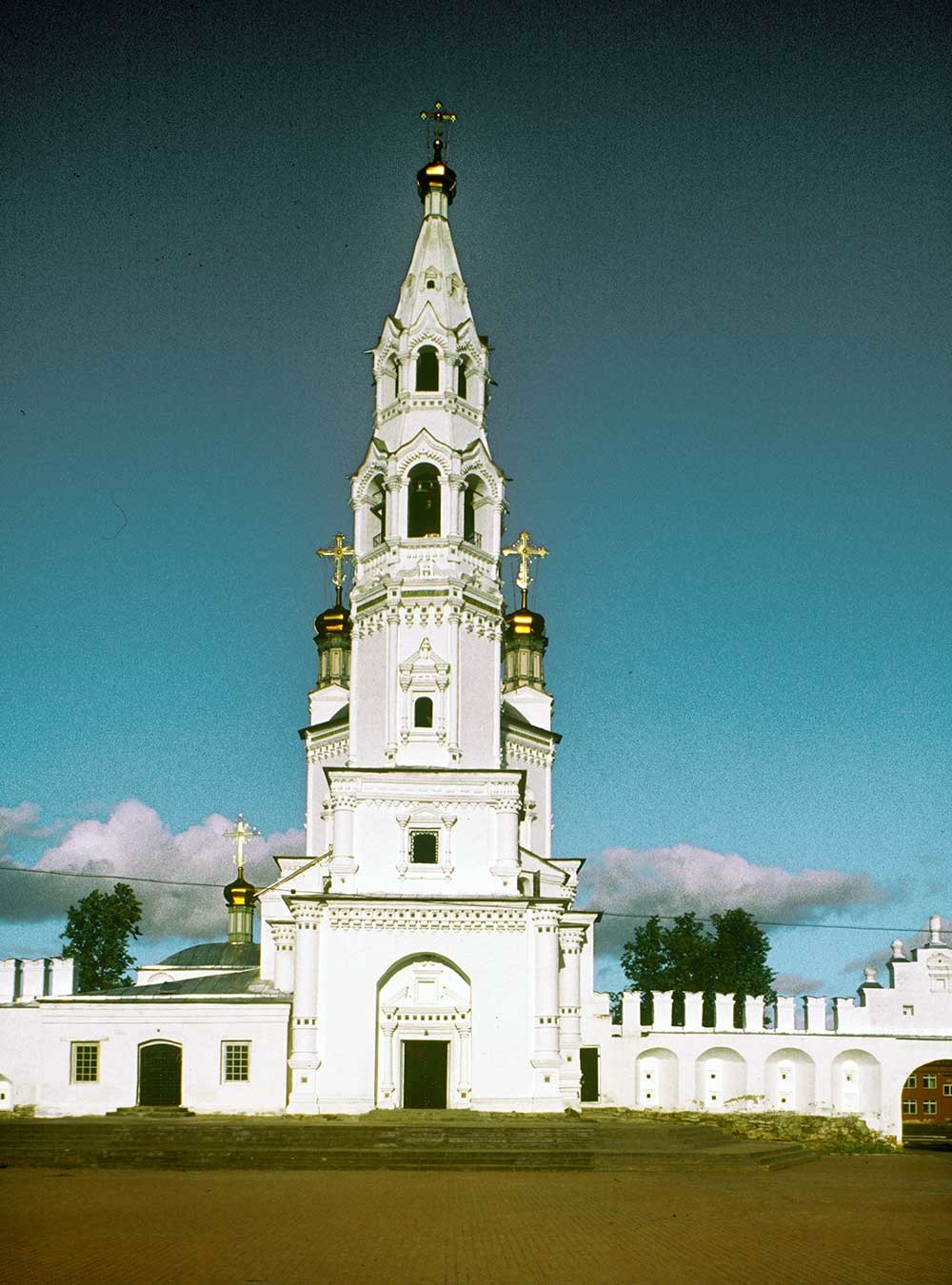
Trinity Cathedral bell tower. West view. August 26, 1999
William BrumfieldThe Russian flair for ornamentation is evident in the festive ceramic work on the cathedral facades. Although we lack Prokudin-Gorsky’s negatives, which would allow a recreation of the colors as he saw them, his contact prints reveal the decorative patterns. My views with a telephoto lens capture polychrome ceramic details on a whitewashed stucco surface. Prokudin-Gorsky also used the cathedral bell tower to take a stunning view south with the Tura River and the Intercession Convent, founded in 1621.
Outpost of Orthodoxy
Despite its decline when the main route over the Urals to Siberia shifted southward to Yekaterinburg in the 1760s, Verkhoturye remained an important religious center, whose churches and monasteries received numerous pilgrims. One of the reasons for this status as a pilgrimage center was its connection with the 17th-century local saint Simeon of Verkhoturye. Nicholas II was especially interested in the saint’s veneration at the Verkhoturye St. Nicholas Monastery, which Prokudin-Gorsky photographed in detail. This will be the topic of a subsequent article.
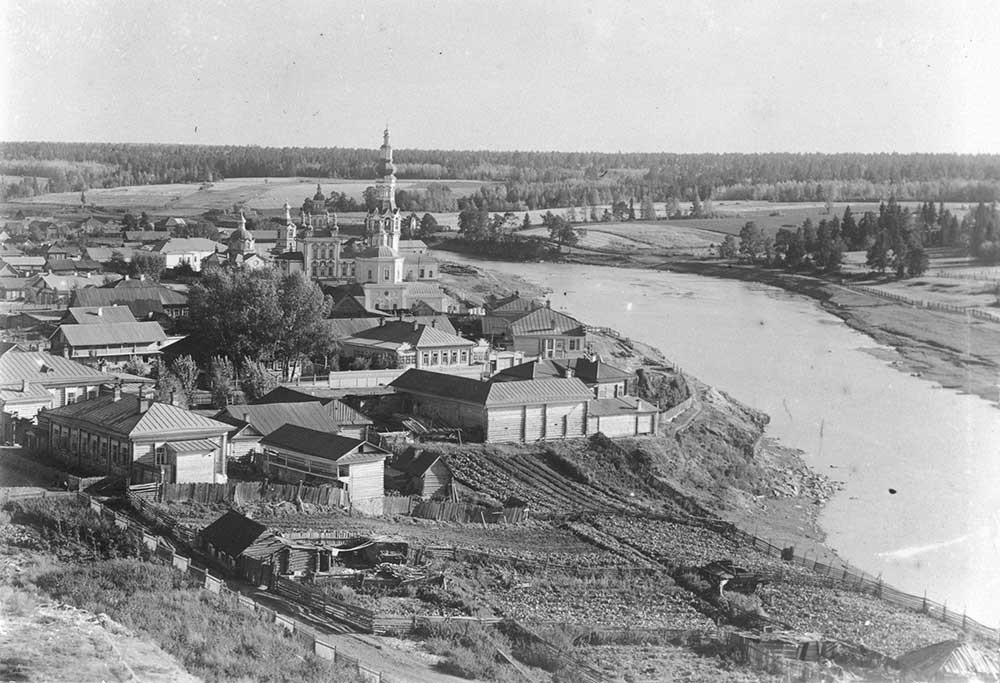
Tura River. View south from Trinity Cathedral bell tower. Left: Intercession Convent. Late summer 1909
Sergei Prokudin-GorskyThe Trinity Cathedral was closed in 1932 and ransacked. Other churches were also closed during the Soviet period, and the town became a center of Gulag administration, including a large network of forest camps that exploited the labor of thousands of prisoners. Although Trinity Cathedral received landmark status in 1960, little was done for its restoration until a superb campaign in the 1990s. In 1998, services resumed in the cathedral.
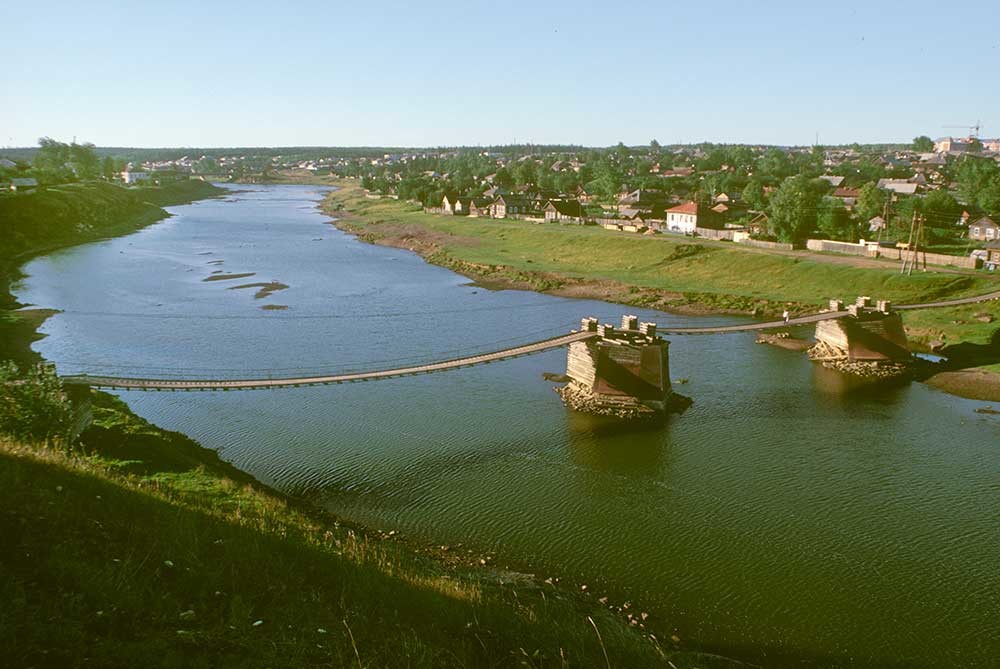
Tura River. View south from Trinity Rock. August 27, 1999
William BrumfieldIn recent years, Verkhoturye has made progress in moving beyond its difficult past and economic depression. With the support of the regional administration and the Orthodox Church, historic ensembles have been restored in this dramatic natural setting.
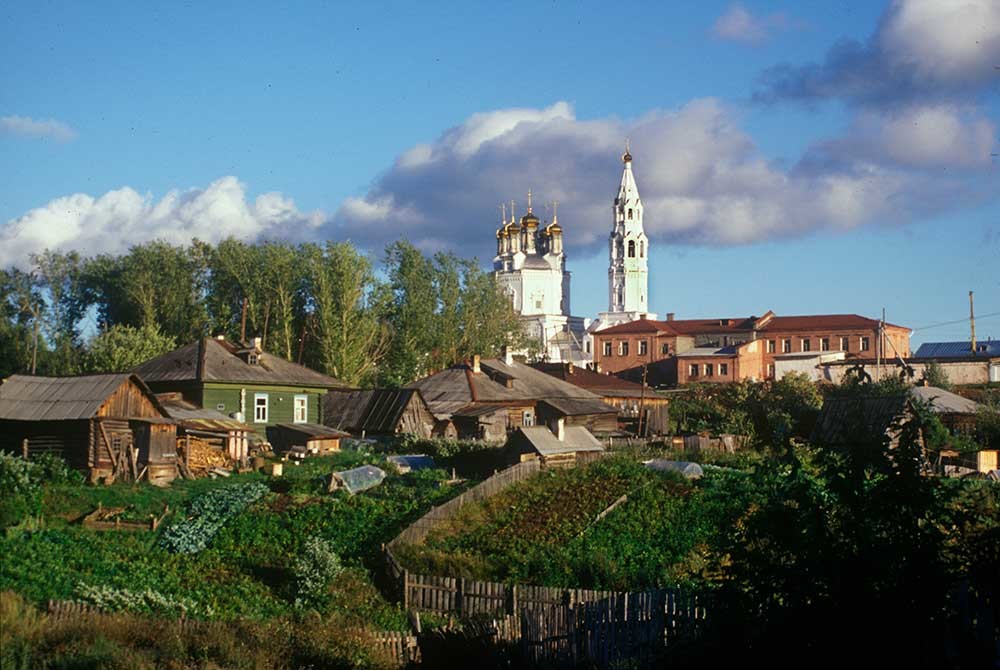
Trinity Cathedral & bell tower. Northwest view with wooden houses. August 26, 1999
William BrumfieldIn the early 20th century the Russian photographer Sergei Prokudin-Gorsky devised a complex process for color photography. Between 1903 and 1916 he traveled through the Russian Empire and took over 2,000 photographs with the process, which involved three exposures on a glass plate. In August 1918, he left Russia and ultimately resettled in France with a large part of his collection of glass negatives. After his death in Paris in 1944, his heirs sold the collection to the Library of Congress. In the early 21st century the Library digitized the Prokudin-Gorsky Collection and made it freely available to the global public. A number of Russian websites now have versions of the collection. In 1986 the architectural historian and photographer William Brumfield organized the first exhibit of Prokudin-Gorsky photographs at the Library of Congress. Over a period of work in Russia beginning in 1970, Brumfield has photographed most of the sites visited by Prokudin-Gorsky. This series of articles will juxtapose Prokudin-Gorsky’s views of architectural monuments with photographs taken by Brumfield decades later.
If using any of Russia Beyond's content, partly or in full, always provide an active hyperlink to the original material.
Subscribe
to our newsletter!
Get the week's best stories straight to your inbox